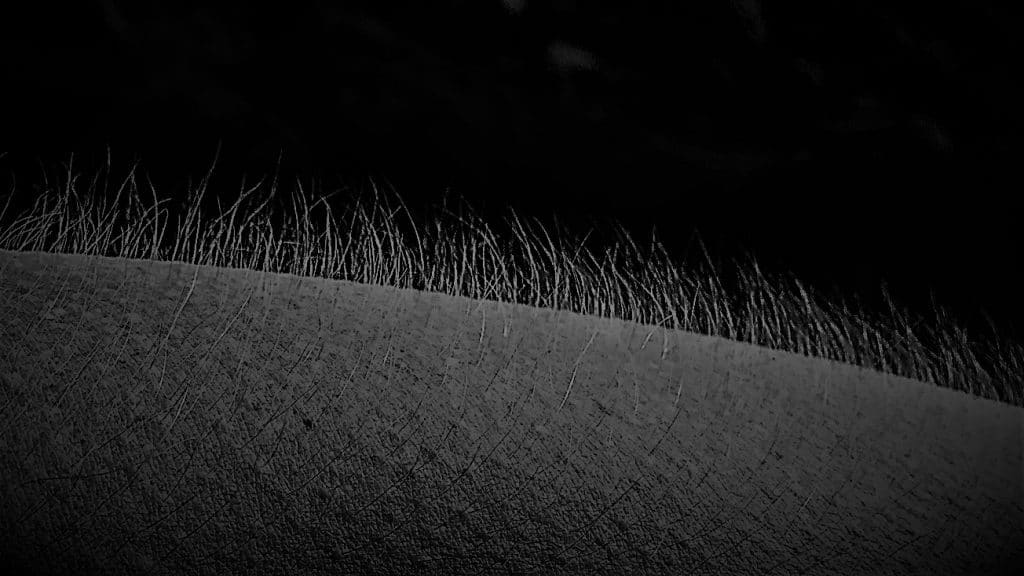Let me tell you about a recent goosebump-moment that struck me.
A few months ago The Movement came through town and played a sold out show, soon after the release of their new album, Ways Of The World. At one point in the show, the headlights went low during a dropped down chorus in the song “Orange Sky.” Josh Swain stood out in front of the crowd, lit only by the glowing fog that filled the stage at his feet. The crowd was lit by hundreds of lighters and phones held in the air – Josh was singing, “You can’t live life for the weekend… “ Oooooohhh, oooooh, the entire crowd sang with him. Goosebumps.
I get goosebumps all the time listening to music, almost every day. I’m sure many of you do as well. I’d gather that if you’re here, you are an artist or lover of the arts – if you’ve found this article, you probably know what I’m talking about.
Did you know that this fact makes you special? Not everyone gets goosebumps.
Multiple studies have been conducted recently, (here’s one) and they’ve found only about ½ – ⅔ people experience this sensation. It’s called frisson, meaning “aesthetic chills,” some people experience this while looking at art, watching a powerful movie scene, interacting with another person, or of course listening to music.
Studies have shown that people who feel these goosebumps have a denser volume of neurons in their brain that connect the sections responsible for processing auditory information, emotion, and memory. More neurons = more efficient processing between these parts of your brain, i.e. these stronger connections make an individual feel emotions more intensely. Frisson.
People who exhibited these qualities also scored high for personality traits that include: unusually active imaginations, a tendency to reflect deeply on their emotions, and an appreciation of art & beauty in nature. Sound like you? These are inherently emotional personality traits.
Ok, here’s where we get to the really important part. Another thing people who have these qualities exhibit is the practice of using music to help manage their emotions. Intensely emotional people use art to help navigate their emotions.
“Listeners often report that they listen to music to calm them down, to stimulate them, to bring them into a positive mood, or to experience emotions like melancholy or nostalgia. Therefore, listening to the sound of music is a unique way to experience and engage with different contrasting emotions, helping us to understand and regulate our mood according to many different situations. This makes music an important part of our overall mental wellbeing.” – University of York Research Team
And interestingly enough, they found that playing “sad” songs could, counter-intuitively, make people happier. (But you already knew that, didn’t you?)
This is where we get to my own hypothesis – most often, frisson is caused by an intense moment of feeling connection. It can be quite comforting amidst a heartbreak to discover that someone else out there has felt that exact same specific way – and has even made art that somehow conveys that impossibly complex emotion!
I would propose: the truly great artists are the ones that, through their art, are able to project a common yet complex emotion in a way that leads to an uplifting sense of shared emotional experience on the part of the beholder. CONNECTION. We are not alone, but rather part of a greater whole of humanity lavishing in the same turbulent and incomprehensibly immense landscape of emotion.
ARTISTS, we need you now than ever! People are struggling with their emotions, and you can help them.
This is the call to action: CREATE. Whatever it is that you create, do it – just do it. Don’t worry about how “good” or “bad” it is, but do it with intention. Do it with the intention to express what you see in this world – because only YOU can express that. And that could be very important. Why? Because someone out there sees the world like you do, and they might feel alone.
Dig deep, be the pioneers we need you to be. Like Magellans of our emotional minds, navigate the swirling currents into dark recesses of passion and vehemence and show us what you find. Bring light to the darkness.
Stand up and let your light shine. Let us see you. That is what we need from the artists of the world at this time. Be a lighthouse. Stand on rocky, sea-soaked, windswept, stormy shores and let your light shine for those still tossed in the waves. Show us that we are not alone.
You’ve been called dreamers; too much imagination. You’ve been called sensitive; too much emotion. You’ve been called wild; too much spirit. We need you now more than ever. You are artists, creators – doers, helpers, and healers. What you create isn’t important, it’s about the intention. Do it with the intention to help this world, and you will.
“We artists are indestructible; even in a prison, or in a concentration camp, I would be almighty in my own world of art, even if I had to paint my pictures with my wet tongue on the dusty floor of my cell.”
― Pablo Picasso

